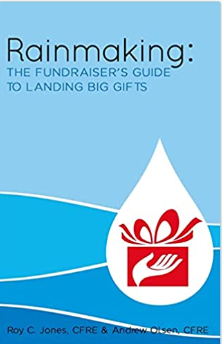Board members need to get more involved in major donor efforts through sharing, identifying donors, meeting with prospects, introducing their friends to the organization and ensuring the development director has what she needs to be successful.
Your board of directors can be your biggest asset. Unfortunately, I’ve met with hundreds of presidents and executive directors whose first concern is: “My board is driving me crazy… what can I do?”My answer is always the same: PUT THEM TO WORK!
Are your board members currently involved in major gift fundraising? If you are like most charities, your board members are committed in spirit and theory to major gift fundraising but maybe just aren’t comfortable or even willing to actually participate in the process. They may make recommendations for saving money: changing suppliers, firing employees, cutting expenses, terminating programs. These are the types of moves people make when they do not understand the art of fundraising. This is the trap a board falls into when they want to demonstrate their value to the organization, but don’t know how to increase revenues. So often, the solution is to just move the pieces around the board, without knowing how to raise any more money.
Chief development officers must empower their board with the knowledge to raise funds (even if they think they already know it all). They must establish an environment that is focused on creating new revenue, instead of simply cutting the old spending. Don’t get us wrong, we’re not saying that you should never make cuts. We’re saying that your focus has to be on creating new revenue and increasing overall giving.
Putting your board to work raising money is easier said than done. According to a recent BoardSource.com survey, 68 percent of nonprofit organizations have a policy requiring board members to make a personal contribution on an annual basis. The survey goes on to say that boards average 74 percent participation in giving; however, on average only 46 percent of boards had a 100-percent participation rate. In the arts and cultural organizations it is more common to find required annual contributions.
The bottom line is, you need every board member to make a financial commitment to the organization on an annual basis. This is something board members and candidates should be made aware of early on in the courting process, and it should be incorporated into your list of board expectations and responsibilities. Don’t expect every board member to give the same dollar amount, though. Some board candidates might find the amount too high; therefore a policy requiring a specific uniform gift amount would eliminate valuable prospects from joining the board. Others may have otherwise considered contributing more, if not for a lower suggested amount that could change their minds.
As import as personal giving is, it is even more importnat for each board member to commit to “thank you meetings” with major donors each and every month. Some board members may only be able to do 3 or 4 meetings a month. However I have seen board superstars do 3 or more meetings a week. As relationships develop between board members and their peers that are also major donors, rest assured that a board member will become an advocate for for the major donors they have met with and when that happens that is when BIG ASKS begin to happen naturally. Some board members may only be able to do 3 or 4 meetings a month. However, I have seen some board superstars do 3 or more meetings a week!
Want to find out more about board fundraising? Check out my book “Rainmaking: The Fundraisers Guide to Landing Big Gifts”. Boards are covered on page 97… [Save 10% by ordering here: http://t.co/ZESuoSHy92 ]


